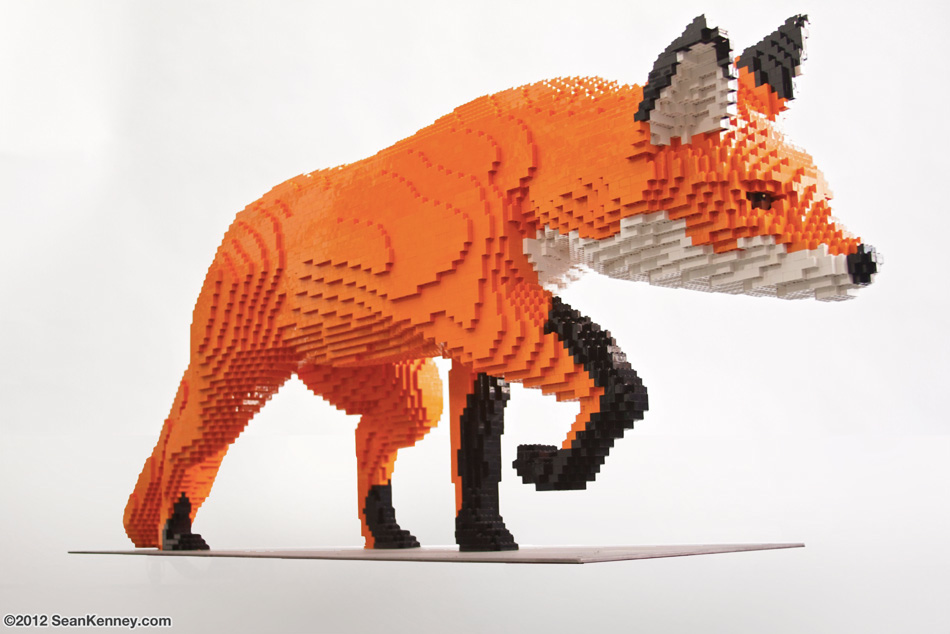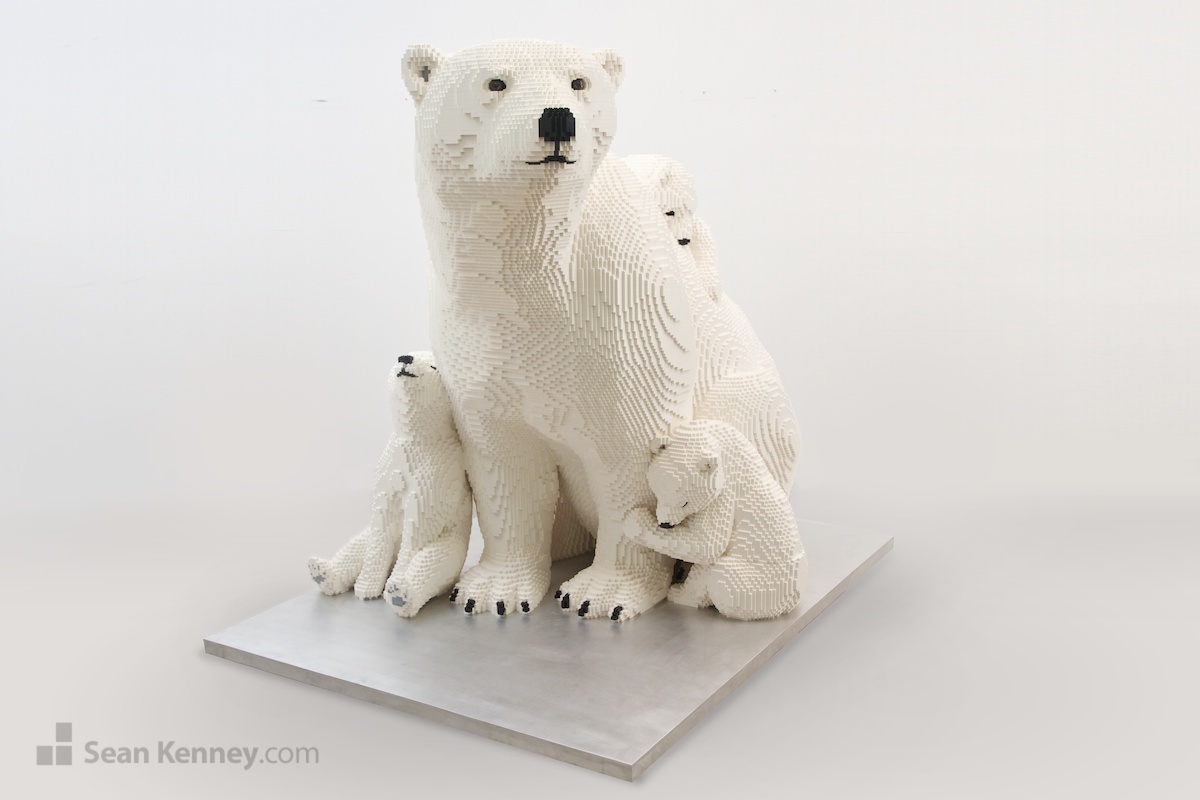Polar bears, spiders, foxes, butterflies and eagles are part of the “Nature Connects” show, on tour in the USA since 2012 until 2020. New Yorker artist, Sean Kenney, has created over 50 sculptures made of more than 1.6 million LEGO pieces to show us the beauty of Nature.
“Nature Connects” includes over 50 larger-than-life sculptures, a show that you can see now in The Morton Arboretum (Lisle, Illinois. Until November 1, 2015), The Denver Zoo (Denver, Colorado. Until November 1, 2015) and in Tucson Botanical Gardens (Tucson, Arizona, until January 3, 2016).
All those animals and plants have a message. “Fundamentally the show is about connections”, says Sean Kenney. “Much as LEGO pieces connect, everything in Nature is connected in an intricate balance. It is important to me that each individual sculpture attempt to illustrate some of these “connections” found in nature, whether it’s a fox hunting a rabbit, a hummingbird feeding on a trumpet flower, baby duckings following their parents on a walk, or squirrels raiding a bird feeder as the birds stand by helpless to stop them.”
Building these sculptures is far from being just a fun, especially when the team ran out of LEGO pieces. That’s what happened in May 2012 when Sean was building this fox, containing 17,547 LEGO bricks. It took him over 200 hours to design and build together with his team.
“He is so big that we ran out of orange bricks halfway through the project and had to set him aside for weeks while we bought more and waited for them to arrive”, Sean told.
The largest sculpture he has ever created is this one of a mother Polar Bear and her cubs, finished almost a month ago. It has 125.467 bricks and it weights 625 pounds.
“I was touched to learn about the relationship that a mother Polar Bear has with her cubs; she raises them, teaches them to hunt, and together they have a very visible and strong love. Watching videos of polar bears with their cubs, I was taken by how almost-human they seemed. I wanted to try to capture this aspect of their lives”, Sean explained.
This sculpture will now spend the next 6 years traveling to Botanical Gardens and Arboretums around the world as part of Nature Connects exhibit.
There are other relations in nature on the show. On of them is the one between a monarch butterfly and a Milkweed plant. “The monarch butterfly pollenates and feeds from a Milkweed plant… both the plant and the insect need each other to survive. I wanted to show the beauty of their natural relationship by posing them together like this.”
This sculpture is the single-most intricate and complex sculpture he have ever created. In all, it took four months of full-time work to design and build. It contains over 60,000 LEGO pieces and was finished in May 2014. “I’ve spent over 160 hours just trying to design its structure. Besides that, this is further complicated by the limited nature of pink LEGO elements, which are hard to get even for us professionals”, he added.
Sean works daily at his New York City art studio, surrounded by this team and 2 millions LEGO pieces. And he is one of only twelve professionals in the world recognized by The LEGO Group for his work.
He has been building and playing with LEGO toys his whole life. “LEGO toys were usually the only toys I ever asked for when my birthday would come around each year”, he remembers. His models slowly became more involved and elaborate as he got older, and eventually he started building LEGO models professionally. After he left his job as a graphic designer, now it’s his full-time career.
Sean’s work with “Nature Connects” isn’t finished yet. He keeps having new ideas and new sculptures are being made.
[divider type=”thin”]
If you want to know more about the exhibition, here is the link for the site.






